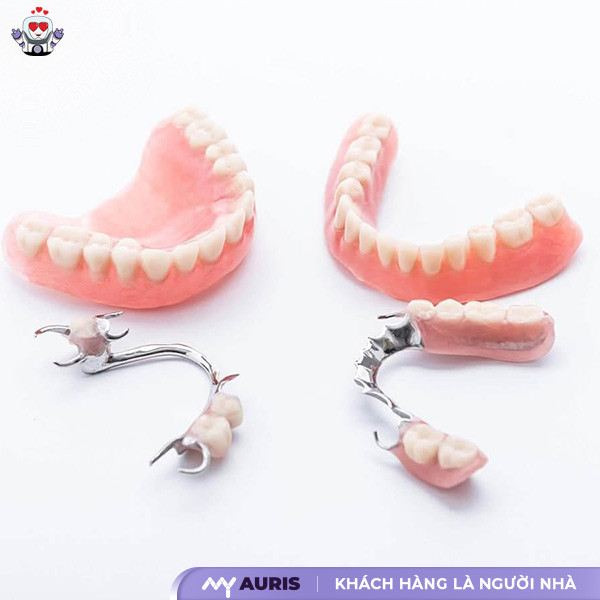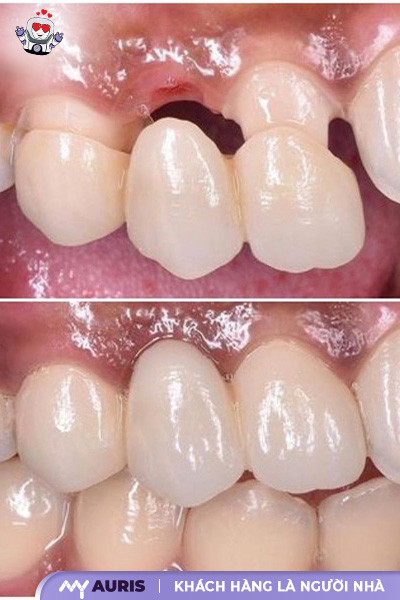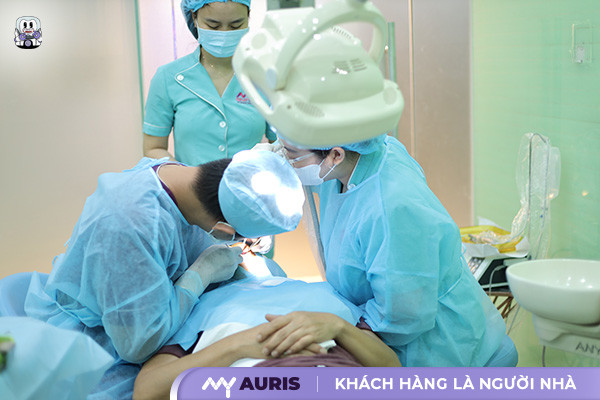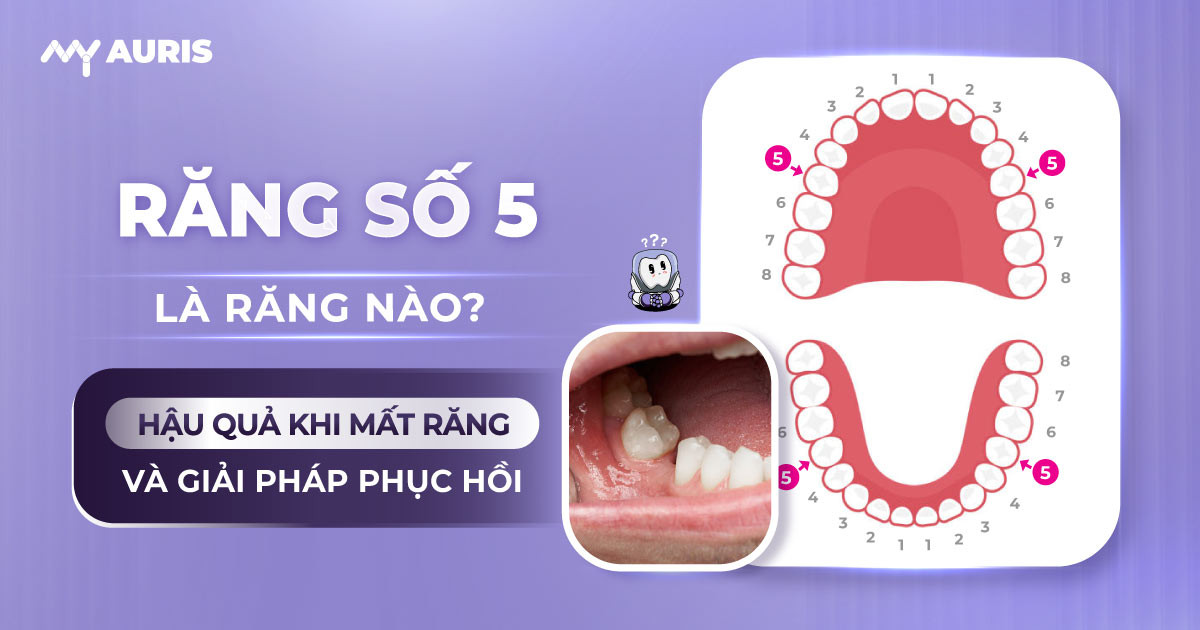Even though the loss of tooth number 5 might not affect chewing as much as other teeth, it still requires attention. Is it necessary to get it replaced? Join My Auris Dental Clinic to learn about the importance of tooth number 5 and optimal restoration solutions to ensure long-term oral health.
Position and Function of Tooth Number 5
Tooth number 5, also known as the second premolar, is one of four important permanent teeth, located in the fifth position counting from the incisors inwards. In adults, two of these teeth appear in the upper jaw and two in the lower jaw, playing a supporting role in the process of chewing and digesting food.
In terms of shape, tooth number 5 has a small body, a mushroom-shaped chewing surface, along with moderately stimulating small grooves, helping to grind food more effectively. Each tooth typically has 1 root, with one to two root canals; this number can vary depending on an individual’s constitution.
Although it doesn’t play the primary role like molars or the largest wisdom teeth, tooth number 5 functions in coordination with canines and other teeth in biting and tearing, supporting the chewing and grinding process, helping the digestive system operate smoothly.
Tooth number 5 usually erupts in children between 10–12 years old and requires proper care to prevent oral diseases such as tooth decay, gingivitis, or tooth loss.

Why is Tooth Number 5 Lost, or Why is Tooth Number 5 Extraction Necessary?
Loss of tooth number 5 or the need for its extraction is not uncommon, often stemming from various causes that directly affect chewing ability and overall oral health. Below are common situations where tooth number 5 requires timely intervention:
Severe dental trauma: If a tooth is fractured, chipped, or loose after an impact and shows no signs of recovery, the dentist will recommend extracting tooth number 5 to limit sensitivity and prevent future complications.
Serious oral diseases: Individuals experiencing tooth decay, tooth infection, or pulpitis in tooth number 5 need early intervention. Extracting tooth number 5 in such cases helps prevent the spread of damage and ensures long-term chewing function remains unaffected.
Misaligned tooth number 5: For cases where orthodontic treatment is planned, if tooth number 5 is misaligned, the dentist will advise its extraction to create favorable space for the teeth to shift into the correct arch, enhancing the effectiveness of orthodontic treatment.
Is Tooth Number 5 Extraction Dangerous?
Currently, with increasingly advanced dental techniques, tooth number 5 extraction has become a simple procedure that causes little pain. However, if patients undergo the procedure at unqualified places that are not reputable dental facilities, there is a complete risk of encountering extraction complications. Some common risks include: tooth fracture during extraction, post-extraction infection, or prolonged bleeding after extraction.

Consequences of Missing Upper and Lower Jaw Tooth Number 5 After Many Years
The extraction of tooth number 5 due to decay, looseness, or irreparable damage is undesirable. However, if teeth are not replaced promptly after loss, patients may face many serious tooth loss consequences affecting their overall health.
Reduced Chewing Ability, Affecting the Digestive System
The second premolar (tooth number 5) plays an important role in chewing and grinding food. When it is lost, chewing force significantly decreases, causing food not to be thoroughly processed before swallowing. Consequently, the digestion process becomes less efficient, leading over time to stomach pain, duodenal ulcers, fatigue, and a reduced quality of life.
Jawbone Resorption and Premature Aging
Failing to replace tooth number 5 after its loss for a long period will lead to jawbone resorption at the missing tooth site. This not only causes malocclusion but also makes adjacent teeth tilt into the gap, altering facial structure and leading to premature aging, sunken cheeks, and sagging skin.
Increased Risk of Oral Diseases
The gap from a missing premolar makes food easily trapped and oral hygiene difficult to perform thoroughly. This creates an ideal environment for bacteria to multiply, attacking the gums and adjacent teeth, causing a series of pathologies such as:
- Tooth decay
- Gingivitis
- Periodontitis
- Persistent bad breath
Can Missing Tooth Number 5 Replace Itself with a New Tooth?
Many people wonder: if tooth number 5 is lost, can a new tooth replace it on its own? The answer depends on age and the stage of tooth development.
According to dental professional experience, deciduous (baby) tooth number 5 is usually replaced by a permanent tooth between the ages of 10 and 12. Compared to other premolars and canines, the timing for the replacement of tooth number 5 is often slightly later. After this stage, if the permanent tooth has already erupted, tooth number 5 will not replace itself or grow back if lost.
Therefore, if you unfortunately lose a permanent tooth number 5, you need to quickly get a dental implant to restore chewing function and facial aesthetics. Delaying treatment can lead to many tooth loss complications such as jawbone resorption, malocclusion, shifting of surrounding teeth, severely affecting overall oral health.
The Most Popular Tooth Number 5 Replacement Methods Today
Even though tooth number 5 cannot naturally regrow once lost, there are now many tooth replacement methods that effectively restore both the chewing function and aesthetics of tooth number 5. Depending on your needs, health conditions, and budget, you can choose one of the three popular solutions below:

Removable Dentures
Removable dentures are a traditional option, consisting of a plastic or metal framework and a porcelain or plastic crown on top. This type of denture can be easily removed and reinserted. A prominent advantage is the relatively low cost of replacement. However, because they are not securely fixed, they are prone to shifting, offer poor chewing function, and often lead to rapid jawbone resorption due to the lack of a replaced tooth root.

Dental Bridge
A dental bridge is a method for restoring tooth number 5 by filing down two adjacent natural teeth to serve as abutments, then attaching a series of dental crowns on top. The completion time is fast, and it provides stable aesthetics. However, this method affects healthy adjacent teeth and does not prevent bone resorption because there is no implant post deeply embedded in the jawbone.

Dental Implant
With the advancement of dental implants, the restoration of tooth number 5 has made remarkable progress. This method uses a safe Titanium implant post, which is surgically placed directly into the jawbone to replace the lost tooth root. After the implant integrates firmly, a dental crown is attached on top, completely restoring chewing function and aesthetics just like a natural tooth. Notably, implant placement effectively prevents bone resorption, ensuring the long-term maintenance of jaw structure.
Although the cost of dental implants is higher than other methods, with superior effectiveness—restoring over 90% of chewing ability, high longevity, even lasting a lifetime with good care—many patients still prioritize choosing this method.
What to Note When Undergoing Implant Placement for Tooth Number 5 Restoration?
Restoring tooth number 5 with dental implants is the optimal choice for regaining chewing function and aesthetics. However, to achieve desired treatment results, patients need to keep the following important points in mind:
Choose a Reputable Dental Clinic
The effectiveness of implant placement heavily depends on the dentist’s skill and the quality of supporting technology. Therefore, instead of only focusing on the cost of implant placement, patients should prioritize choosing a specialized dental clinic with a team of highly experienced dentists who have performed many complex restoration cases.
At My Auris – Ho Chi Minh City, customers are examined and treated by a team of highly qualified Implant specialists. The clinic is fully equipped with modern machinery such as:
- Centrifuge machine for PRP membrane creation to support rapid wound healing
- Laser machine, Piezotome machine to help reduce pain and minimize trauma
- Application of digital technology in implant placement: surgical guide for implants, PIC impression system for accurate, safe, and gentle treatment
- Internationally standardized operating room ensuring absolute sterility

Choosing the Right Implant Post and Porcelain Crown
Patients should choose an implant post type and porcelain crown that suit their financial conditions and usage needs.
Currently, there are 3 common types of crowns on the market:
- Metal-ceramic crown: lower cost but less aesthetic
- Titanium-ceramic crown: durable, reasonably priced (about 3 million VND/unit at My Auris)
- All-ceramic crown: most premium with optimal natural appearance and gum fit (about 7 million VND/unit)
My Auris applies CAD/CAM technology to design porcelain crowns with precise accuracy down to every gum line, making the new teeth look as natural as real ones.
Understand the Cost of Tooth Number 5 Implant Placement
The cost of tooth number 5 implant placement is not fixed and depends on:
- The type of implant post used
- The type of porcelain crown chosen
- The skill of the treating dentist
- The clinic’s infrastructure and technology
Dental clinics that apply modern technologies such as Piezotome, laser, PRP machines, or digital techniques often have higher costs but offer superior effectiveness and safety in return.
Proper Post-Treatment Care Instructions
After implant placement, proper care helps shorten the healing time and increase the lifespan of the implant post.
- First 24 hours: Apply a cold compress externally to the cheek or lip area to reduce swelling and pain.
- Drink plenty of water, eat soft foods such as porridge, soup, and broth.
- When cleaning your mouth: use a soft-bristled toothbrush, operating gently.
- Combine dental floss and mouthwash to clean plaque around the implant post.
Early Restoration is Recommended for Missing Tooth Number 5
Tooth number 5 belongs to the premolar group, performing both biting and chewing functions. If this tooth is lost and not treated promptly, it can lead to jawbone resorption, shifting of adjacent teeth, and reduced facial aesthetics. Therefore, patients should restore missing teeth as soon as possible.
My Auris – a specialized dental clinic in Ho Chi Minh City, is ready to accompany you on your journey to restoring your smile. Whether you are missing tooth number 5 or any other tooth, please contact us immediately for consultation and to schedule an examination with our specialist dentists.





